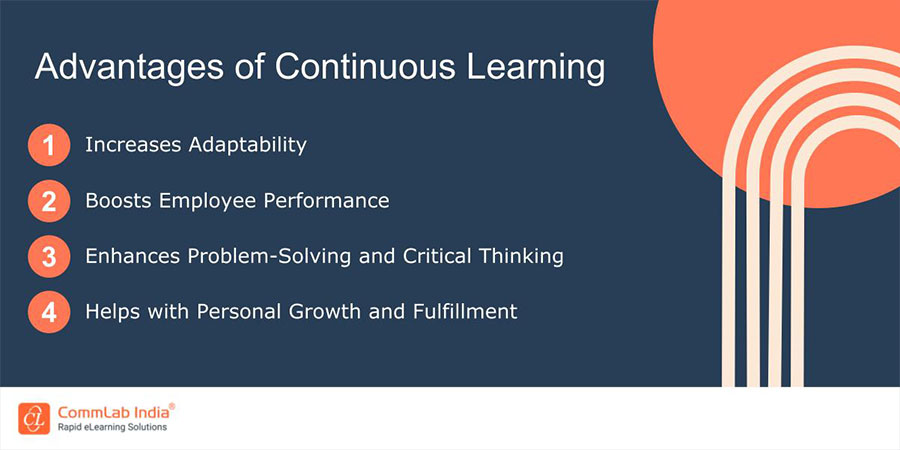6 Secrets to Successful Sales Enablement Training

In the dynamic world of sales, where competition is fierce and customer expectations are constantly evolving, the role of effective sales enablement training cannot be overstated. Sales enablement is the strategic alignment of people, processes, and technology to empower sales teams and enhance their ability to engage buyers successfully. In this blog, we will uncover six secrets that can pave the way for successful sales enablement training, accompanied by practical examples to illustrate their real-world impact. But before that, let's quickly discuss various types of sales enablement training sessions.
Need to Have Successful Sales Enablement Training?
Here are a few secrets to make it happen -
- Define clear objectives and goals
- Understand your audience
- Leverage technology wisely
- Continuous learning culture
- Measure and analyze performance
- Feedback and iteration
Different Types of Sales Enablement Training Sessions
1. Product Knowledge Training
This type of sales enablement training focuses on equipping sales professionals with in-depth knowledge about the products or services they are selling. It covers features, benefits, use cases, and competitive differentiators. By ensuring that the sales team has a profound understanding of the offerings, they can confidently communicate value propositions to potential customers, address objections, and tailor their pitch to specific client needs.
→ Download Case Study: Blended Learning for Sales and Service Training
2. Sales Process and Methodology Training
Sales enablement training often involves training sales teams on effective sales processes and methodologies. This includes understanding the stages of the sales funnel, prospecting techniques, objection handling, and closing strategies. Providing a structured framework for approaching sales opportunities helps standardize the sales approach within an organization and ensures that all team members are aligned in their efforts.
3. Technology and Tools Training
In today's digital age, leveraging sales technologies is crucial for efficiency and effectiveness. Sales enablement training includes familiarizing teams with various tools and technologies, such as Customer Relationship Management (CRM) systems, sales enablement platforms, and communication tools. Training in these areas ensures that sales professionals can leverage technology to streamline their workflows, track customer interactions, and access relevant content in real-time. Here are a few tools you can use for an effective business collaboration.

4. Content Creation and Management Training
Effective digital learning content is a cornerstone of successful sales enablement. This type of training focuses on training sales teams how to create compelling content, such as presentations, case studies, and sales collateral. Additionally, it covers the efficient management and organization of content within centralized platforms, ensuring that sales representatives can easily access, share, and utilize the most relevant materials for their interactions with prospects and clients. Watch this video to understand how you can create content quickly using the principles of rapid eLearning.
5. Soft Skills and Communication Training
Beyond product knowledge and technical know-how, successful sales professionals must possess strong interpersonal and communication skills. Sales enablement training in this area emphasizes techniques for effective communication, active listening, and building rapport with customers. Training programs may also cover customer service aspects such as negotiation skills, emotional intelligence, and the ability to adapt communication styles to different customer personas.
6 Secrets to Successful Sales Enablement Training
1. Define Clear Objectives and Goals
The first secret to successful sales enablement training is to establish clear objectives and goals. Without a defined roadmap, training efforts can become scattered and fail to address the specific needs of your sales team. Imagine a software company launching a new product. The sales enablement training objective is to ensure that the sales team fully understands the features, benefits, and unique selling points of the new product. The goal is to increase product knowledge among the sales team, ultimately leading to improved customer conversations and increased sales.
2. Understand Your Audience
To tailor your sales enablement training effectively, you must have a deep understanding of your audience. This includes knowing their existing skill set, learning preferences, and challenges. Suppose you're working with a diverse sales team that includes both experienced veterans and new hires. A successful training program would take into account the varied levels of expertise, providing advanced modules for seasoned sellers and foundational content for those new to the industry.
3. Leverage Technology Wisely
In today's tech-driven landscape, the integration of technology into sales enablement is crucial. However, the key is to leverage technology wisely, ensuring that it enhances rather than overwhelms the learning process. Consider implementing a sales enablement platform that offers interactive simulations. This technology allows sales reps to practice their pitches in a risk-free environment, receiving instant feedback on their performance. This not only enhances their skills but also boosts their confidence in real customer interactions.
4. Continuous Learning Culture
The most successful sales enablement programs foster a culture of continuous learning. Sales is an ever-evolving field, and your training efforts should reflect this reality. Implement a system of regular knowledge updates, perhaps through weekly newsletters or monthly webinars. Encourage sales reps to share insights and success stories, creating a collaborative environment that promotes ongoing learning and improvement.

5. Measure and Analyze Performance
To gauge the effectiveness of your sales enablement training, it's essential to establish key performance indicators (KPIs) and regularly analyze results. If your training goal is to improve conversion rates, track the performance of the sales team before and after the training implementation. If conversion rates increase, it's a clear indicator that the training is making a positive impact.
6. Feedback and Iteration
Lastly, you can create a feedback loop that allows sales reps to provide input on the training program. Use this feedback to make necessary iterations and improvements. After a series of training sessions, gather feedback through surveys or focus group discussions. If a particular module receives consistently positive feedback, consider expanding on that content in future training. Conversely, if a module is less effective, adjust the material to better meet the needs of the sales team.
Wrapping Up!
In conclusion, successful sales enablement is an ongoing journey. Integrating these six secrets into your training strategy empowers your sales team to navigate the modern business landscape. The objective is not just to train but to enable teams to thrive in a dynamic market. Sales enablement is the catalyst for growth and sustained success. There are various types of strategies to proceed with sales enablement training. Check out how we leveraged blended learning for sales and service training for a manufacturing major.





![6 L&D Roles for Successful Staff Augmentation [Infographic]](https://blog.commlabindia.com/hubfs/augmentation-l%26d-roles-infographic-fi.jpg)